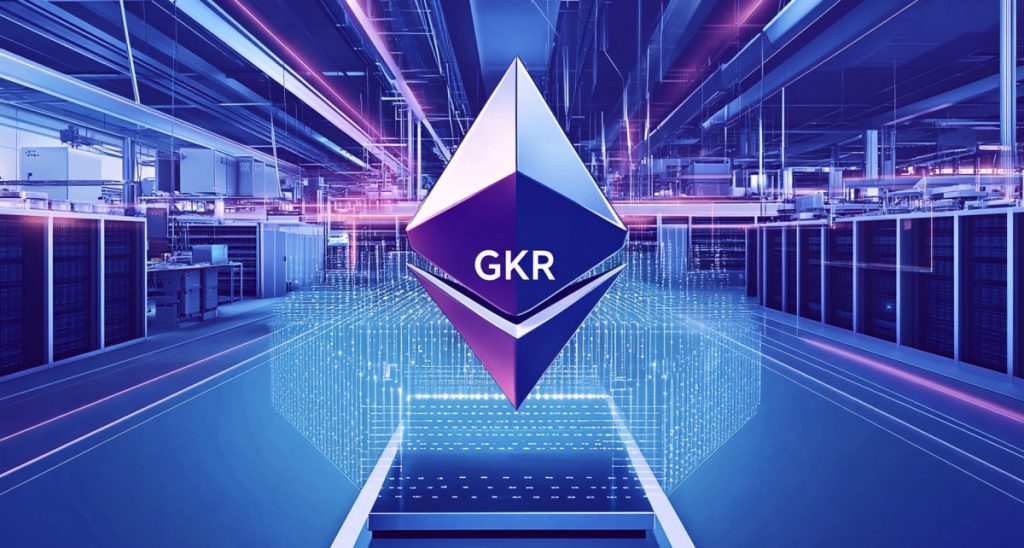Vitalik Buterin Introduces GKR Protocol To Boost Ethereum’s Scaling And ZK Efficiency


In Brief
Vitalik Buterin has proposed using the GKR protocol to enhance Ethereum’s zk-SNARK and zk-STARK systems, offering up to 15× greater efficiency and supporting his vision for a scalable, quantum-resistant “Lean Ethereum.”

Ethereum co-founder Vitalik Buterin introduced the potential application of the GKR protocol to improve the efficiency of traditional zk-SNARK and zk-STARK systems. On October 20th, he published a tutorial on his personal blog, vitalik.eth.limo, outlining the Goldwasser–Kalai–Rothblum protocol. This recursive proof aggregation technique could alter how Ethereum handles scaling and verification.
He noted that recent developments in zero-knowledge (ZK) cryptography have focused on specialized solutions for distinct computational tasks, with some optimized for arithmetic circuits and others for state transitions. The GKR protocol, originally proposed in 2010, merges these advantages, enabling verification of millions of computations per second without the need to validate intermediate steps.
According to Vitalik Buterin, GKR is particularly suited for operations with large amounts of uniform data organized in layers, such as mass hashing with Poseidon2 or neural network processes where a single algorithm applies across multiple datasets. Unlike traditional systems like STARK, which require generating proofs at every computation stage—including constructing Merkle trees and hashing all underlying data—GKR requires cryptographic commitments only for input and output values, eliminating extensive intermediate operations.
In practice, the protocol has demonstrated efficiency up to 15 times greater than zk-STARK-based solutions. Its foundation lies in a sumcheck verification method that sequentially simplifies verification: the system first proves the final result is correct and then iteratively verifies each prior computation stage, progressively reducing the complexity of the task.
Ethereum Advances Toward Scalable, Efficient, And Quantum-Resistant Networks With GKR Protocol Integration
The GKR protocol complements Vitalik Buterin’s broader concept of “Lean Ethereum,” a vision for a streamlined and quantum-resistant network design. It directly contributes to Ethereum’s efforts to achieve faster finality, enable proof aggregation for rollups, and enhance ZK-based scalability.
This development follows several of Ethereum Co-Founder’s prior proposals, including advanced interoperability tools for Layer 2 networks, partially stateless clients to reduce node storage requirements, and governance mechanisms supported by ZK-proofs. Collectively, these initiatives aim to make Ethereum more efficient, private, and accessible.
As developers begin experimenting with GKR-based implementations, Ethereum’s cryptographic framework could become lighter and faster, supporting Vitalik Buterin’s long-term objective of scalable, verifiable computation.
Disclaimer
In line with the Trust Project guidelines, please note that the information provided on this page is not intended to be and should not be interpreted as legal, tax, investment, financial, or any other form of advice. It is important to only invest what you can afford to lose and to seek independent financial advice if you have any doubts. For further information, we suggest referring to the terms and conditions as well as the help and support pages provided by the issuer or advertiser. MetaversePost is committed to accurate, unbiased reporting, but market conditions are subject to change without notice.
About The Author
Alisa, a dedicated journalist at the MPost, specializes in cryptocurrency, zero-knowledge proofs, investments, and the expansive realm of Web3. With a keen eye for emerging trends and technologies, she delivers comprehensive coverage to inform and engage readers in the ever-evolving landscape of digital finance.
More articles

Alisa, a dedicated journalist at the MPost, specializes in cryptocurrency, zero-knowledge proofs, investments, and the expansive realm of Web3. With a keen eye for emerging trends and technologies, she delivers comprehensive coverage to inform and engage readers in the ever-evolving landscape of digital finance.


















































